Professional Historians Australia publishes a schedule of minimum recommended rates for the non-permanent engagement of accredited professional historians. The Scale of Fees document is updated annually immediately after the mid-year release of CPI figures.
This user’s guide sets out some of the principles of the national Scale of Fees:
The scale is intended to apply to the non-permanent engagement of accredited, self-employed, professional historians. It includes provision for leave (annual, long-service and sick) and superannuation, as well as the usual costs of running a business (for example, office equipment, vehicle, maintenance of a library, professional memberships and insurances).
The Scale of Fees is not intended for use by salaried historians. A Professional Historians Association (PHA) member wishing to negotiate a salary with a public agency or private consultancy firm should check the existing salary levels of historians employed in public agencies.
In the event that a historian is working for an employer as an independent contractor but deemed an employee in regards to superannuation regulations (SGAA 1992), the Scale of Fees should be reduced by the current percentage amount of superannuation the employer is paying (eg: 11.5% superannuation current June 2024).
The scale represents fixed costs. Variable and out-of-pocket costs, including distance travel and accommodation, copies of images, photocopying, access to records, report production, couriers, etc. should be negotiated for individual projects. Such costs are charged to the client as expenses or outlays. GST is additional to the recommended rates.
Shorter engagements usually result in a lower number of effective chargeable hours. Annual rates allow for four weeks annual leave and up to two weeks sick leave; this is reflected in the seemingly higher weekly rates. Similarly, the hourly rate recognises that an average working week for a self-employed, professional historian results in an estimated 28 to 30 chargeable hours.
A core principle is that the value of a historian’s work is the same no matter where he or she is located. Costs of living and of doing business tend to even out across geographical locations; for example, the cost of housing may be higher in capital cities, but resources and repositories are easier and cheaper to access. Communication costs also tend to be lower. The range of values within each fee level allows for negotiation according to location and market demands.
The four levels in the scale equate to specific experience and expertise gained within the profession. A historian’s hourly rates will reflect their particular level of expertise. Level 1 provides an entrance for the professionally young or newly graduated; it equates to a research position at university or graduate position in the public service. Level 4 provides for the skills and experience of distinguished professional historians. The fee levels DO NOT equate with the levels contained within the National Standard for the Accreditation of Professional Historians in Australia where the Professional, Associate, and Graduate levels represent membership benchmarks based on the academic qualifications that underpin expertise. All accredited historians have skills acquired through relevant university study, however, it is their subsequent experience that sees them develop their expertise in and across diverse fields.
The scale offers an indicative range of recommended fees, from minimum to maximum, for each of the four levels of expertise.

